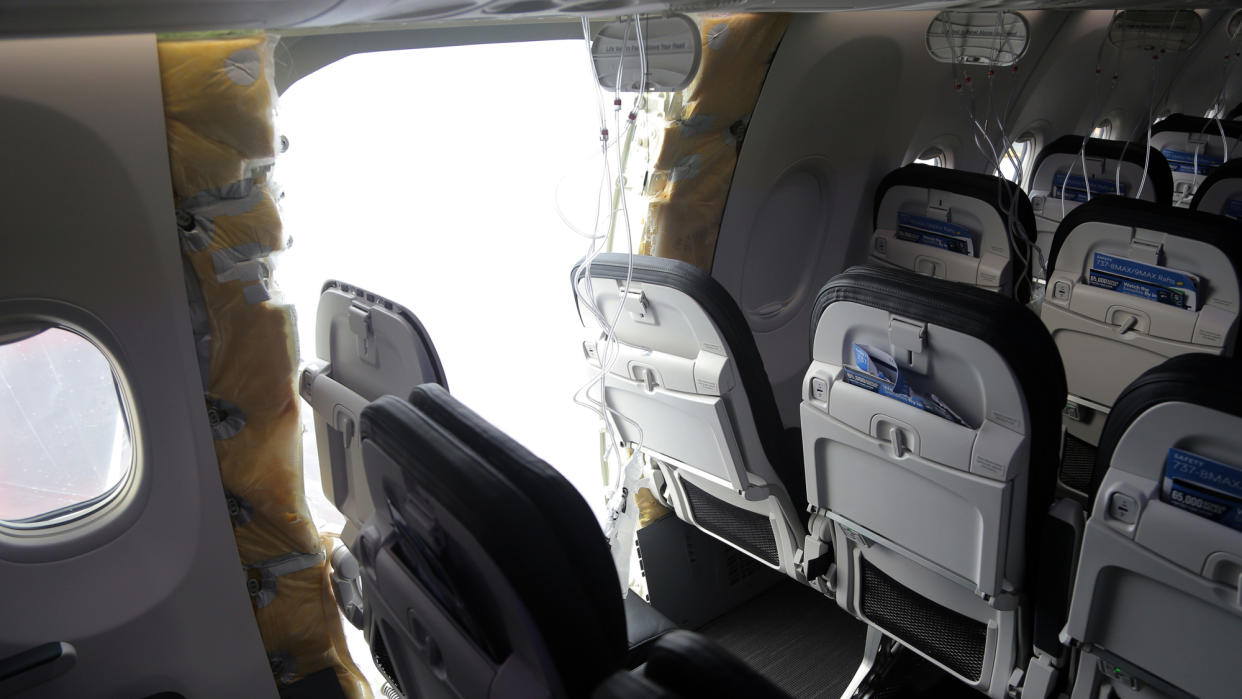Midair blowout: another black mark for Boeing

The smartest insight and analysis, from all perspectives, rounded up from around the web.
Some heard a boom. Others a bang. Moments later, the passengers of Alaska Airlines Flight 1282 were staring through a gaping hole at the night sky, said Colbi Edmonds and Rebecca Carballo in The New York Times. "A door-size section near the rear of the plane" had blown off. Inside the chaotic cabin, "people stood up, pointing and yelling that there was a hole in the back." Oxygen masks dropped down, and "flight attendants made announcements asking passengers to sit down and stay seated." Some texted goodbye messages to loved ones, fearing the worst. The plane, a Boeing 737 Max 9, managed to land safely 13 minutes later and, amazingly, no one was injured; nobody had been in the window or middle seat of Row 26, the row closest to the missing section. But the force of the suction ripped someone’s shirt off, and others lost possessions, including an iPhone that was recovered (intact) 16,000 feet below.
Boeing "has suffered from numerous production issues since a wider grounding of the 737 Max family in March 2019 that lasted 20 months after two deadly crashes killed 346 people," said David Shepardson and Lisa Barrington in Reuters. Federal investigators said that initial examinations of last week’s incident raised questions about whether the cabin panel "had been properly attached." But the incident may point to broader problems. Alaska Airlines and United Airlines both "found loose parts on multiple grounded aircraft." Boeing CEO David Calhoun, acknowledged that the company has to address a distressing pattern, said Danny Lee in Bloomberg. He “fought back tears” at a companywide meeting this week in which he told employees that “the planemaker must own up to its shortcomings.”
The mishap has “blown another hole in Boeing’s reputation,” said Jon Sindreu in The Wall Street Journal. The aircraft section involved was built by Kansas-based Spirit AeroSystems, a former Boeing subsidiary that Boeing has cited in production issues in the past. Still, in the end it’s Boeing that’s responsible for its finished planes, and the “constant bad headlines” will make regulators “take their time” certifying upcoming 737 Max models. Meanwhile, Boeing has brazenly been asking aviation regulators for an exemption from certain safety standards on its Max 7 jets, said Peggy Hollinger in the Financial Times. The exemption involves anti-icing systems that are "not a critical safety issue." But it’s "not a good look" for Boeing to seek safety exemptions "so it can rush an aircraft out the factory doors."
"How many more issues have to emerge with Boeing airplanes before we can finally start calling this a pervasive problem?" asked Brooke Sutherland in Bloomberg. The Trump administration offered Boeing a "slap-on-the-wrist deferred prosecution agreement" for 2019’s fatal 737 Max crashes in Indonesia and Ethiopia, which the company blamed largely on two former employees. It seems safe to say now, though, that "the Boeing culture and aerospace supply chain that produced this plane have systemic flaws."
This article was first published in the latest issue of The Week magazine. If you want to read more like it, you can try six risk-free issues of the magazine here.

